
At the turn of the XV and XVI centuries, Botticelli created a series of paintings designed to decorate the church chests, on the theme of the life of St. Zinoviy, who in his youth converted to Christianity and was famous for his exceptional abilities to resurrect the dead.
Created in a later period of creativity, the “History of Saint Zinoviy” narrates about four directly following successive scenes of the legend. On the left side of the picture there is a boy, who fell under the wheels of the cart. A mother brings a dead child to a saint who heals him and returns it to his parents. On the right, we see a saint on his deathbed.
This bishop lived in the IV century, but the story was transferred by the artist to his contemporary environment. The types and architectural backstage, among which events occur, remind the viewer of Florence of the fifteenth century. For example, in the composition “Miracles of Saint Zinoviy” Florentine Square of San Pierre Maggiore is recognized. The images show a resemblance to the painting of the limit of the work of the Florentine monk of the first half of the 15th century, Fra Angelico, with clear geometric volumes of architecture, convex, but at the same time devoid of weight, figures painted in pure sonorous tones.
The streets in Botticelli’s paintings are frighteningly empty, landscapes in the background seem almost devoid of life, and the rhythm of the lines from calm and angular easily turns into blazing swirls of draperies and ecstatic gestures. The harsh simplicity of the painter’s master language and the sense of catastrophicness, expressed in a number of scenes of this cycle, evokes associations with the vulgar force of exposition and the ardent spirit of the sermons of Girolamo Savonarola.
 Three miracles of Saint Zinovy by Sandro Botticelli
Three miracles of Saint Zinovy by Sandro Botticelli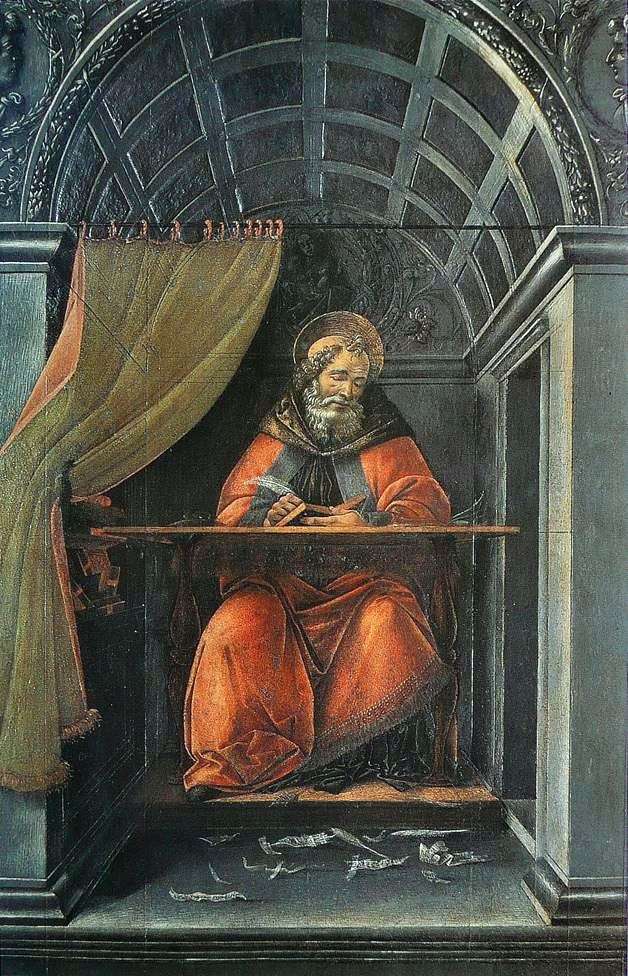 St. Augustine, writing in his cell by Sandro Botticelli
St. Augustine, writing in his cell by Sandro Botticelli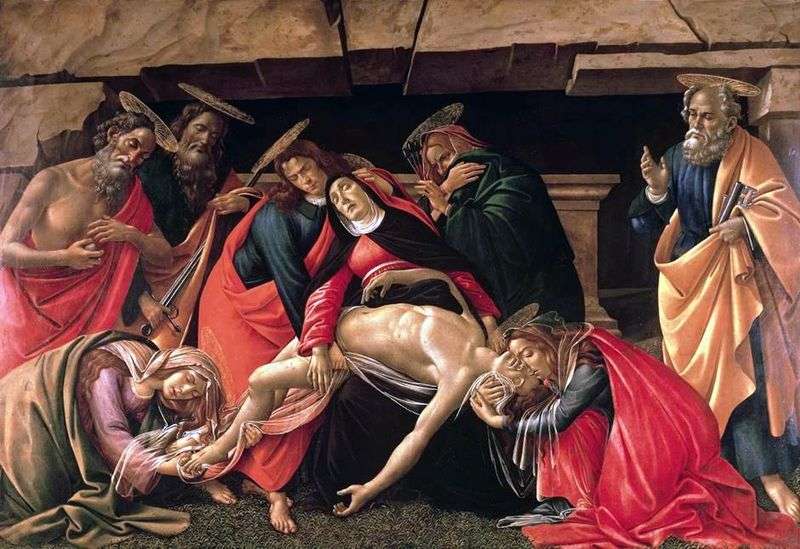 The situation in the grave is Sandro Botticelli
The situation in the grave is Sandro Botticelli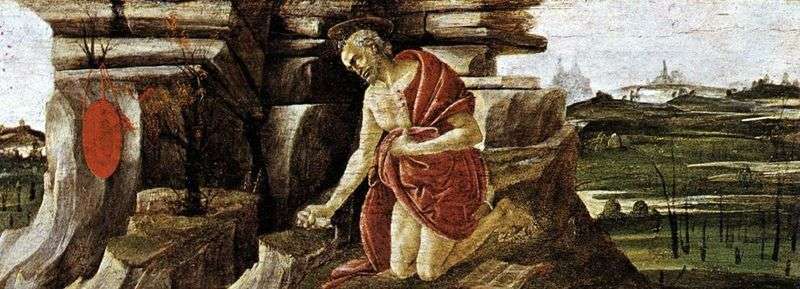 Repentance of Saint Jerome by Sandro Botticelli
Repentance of Saint Jerome by Sandro Botticelli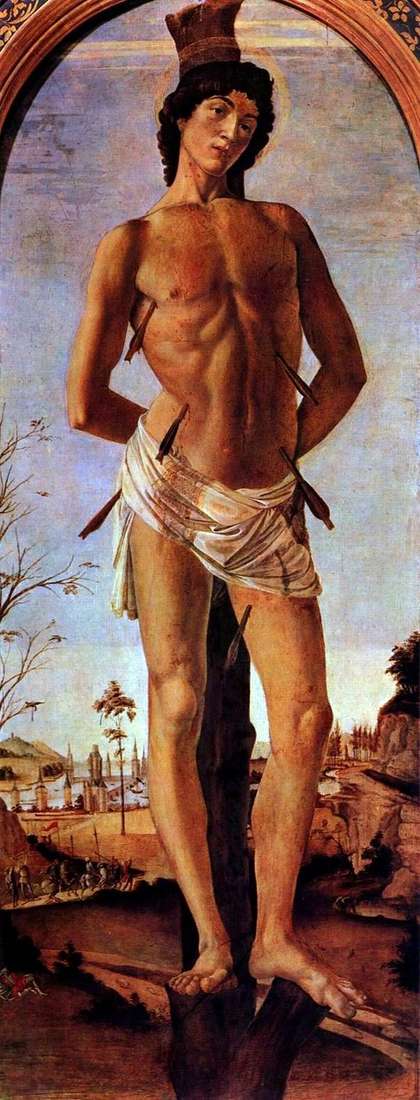 Saint Sebastian by Sandro Botticelli
Saint Sebastian by Sandro Botticelli St. Augustine the Blessed by Sandro Botticelli
St. Augustine the Blessed by Sandro Botticelli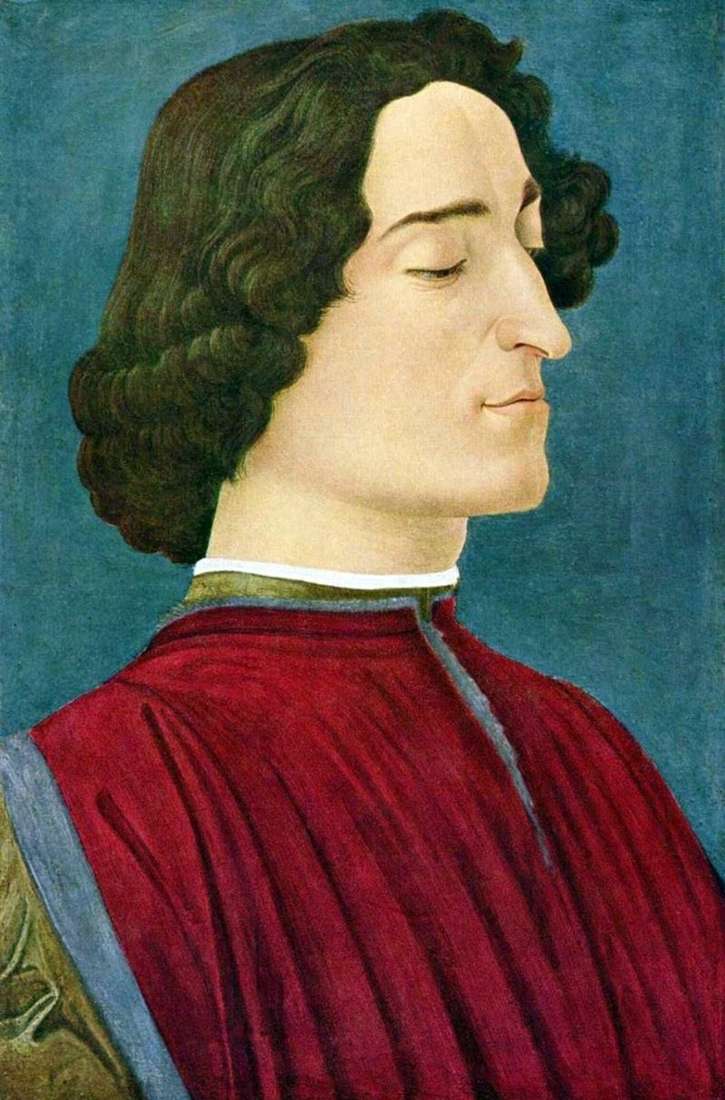 Portrait of Giuliano Medici by Sandro Botticelli
Portrait of Giuliano Medici by Sandro Botticelli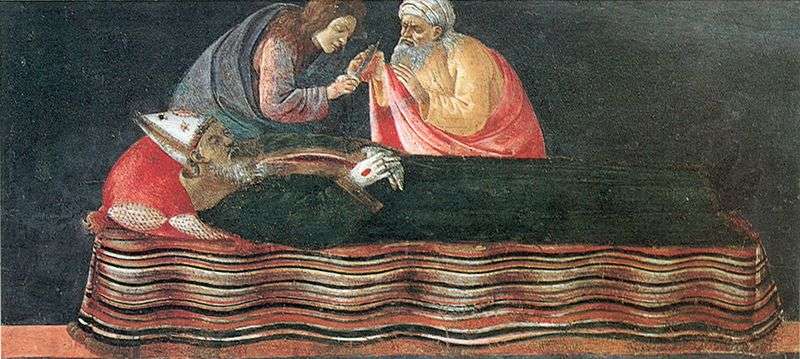 Extracting the Heart of Saint Ignatius by Sandro Botticelli
Extracting the Heart of Saint Ignatius by Sandro Botticelli